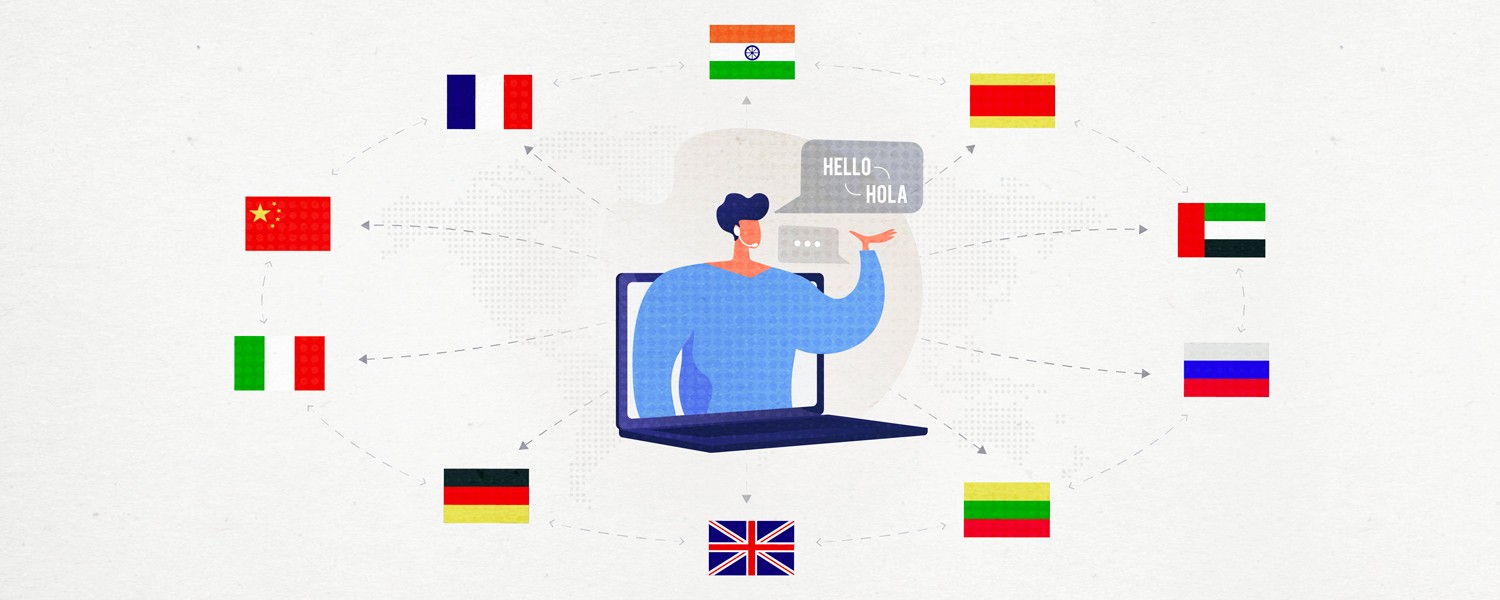As a business grows, so does the focus on building and maintaining strong customer relationships. Businesses that aim to make a mark globally, understand the need to interact with customers from all over the world, in their native language.
Engaging with customers in their preferred language helps them feel heard. The message is highly personalized, and as a result, customer satisfaction increases. However, offering multilingual customer support is easier said than done. So, where do you begin?
The Question of Scale
Many customer support teams hire agents specializing in languages for which they receive a high volume of customer interactions or tickets. However, there is a vast number of languages in which companies receive a low volume of tickets. At this juncture, brands often turn to automation or machine-based translation to scale up their multilingual interactions.
While artificial intelligence (AI) has helped humankind achieve many great feats, when it comes to language, it falls short. For example, a couple of years ago, Indonesia was hit by an earthquake that killed 98 people and injured many others. Strangely though, several Facebook users found that their screens filled up with balloons and confetti at the mention of certain words, like Selamat which means ‘safe’ or ‘unhurt’ in Indonesian . It turned out that when its used in a different context, it also means ‘congratulations’. Facebook’s algorithm could translate the word but couldn’t interpret the context thereby triggering congratulatory images at a time of grief and loss.
AI: The Path of Most Resistance
Machine translation (MT), enabled by AI, has been in the spotlight for a while, and for compelling reasons. However, the quality of MT can be questioned, especially in terms of accuracy.
To understand the challenges associated with MT, it’s essential to know how it works. There are four main methods used today. The most basic process is statistical machine translation (SMT), where large volumes of multilingual texts are referred to find source and target word matches. On the other end of the spectrum is the more advanced method of neural machine translation (NMT), where the system is supposed to imitate neural networks of the human brain. The database for NMT is made up of previously translated content, which the machine processes and learns from over time.
While translation technology has evolved significantly, it’s yet to incorporate three major factors that determine quality and accuracy: context, culture, and human emotion. Let’s take a closer look:
- Context: Contextual relevance is vital in determining whether a translation makes sense in a given scenario. For example, French differentiates between addressing another individual formally or informally based on the relationship. The informal word for you in French is tu, whereas the formal alternative is vous. When you’re referring to a friend, close relative, or someone younger, you would generally use tu to address them. Machines can’t determine these relationships.
- Culture: Culture and language are closely related. However, unlike language, culture can’t be taught, and it certainly can’t be programmed. Culture needs to be experienced, immersed in. The trickiest part? Culture is as dynamic and different from one region to the next.
- Human Emotion: AI and machine learning lack the ability to understand or express human emotions. Machines can rarely differentiate between tone and intent. For example, there’s a fine line between sounding friendly and sounding overly personal. This is a line you can’t cross in a professional setting, especially not with clients!
To put it quite simply, machine-based translation is a little like non-player characters (NPCs) in video games. Remember Nigel Billingsley from the Jumanji sequels? The character had a set script that he repeated every time another character spoke to him. It didn’t change based on the context; it didn’t matter where or with whom the interaction took place, and he had the same tone every time! He appeared very real but simply recited what he was programmed to say.
Translating Support Tickets By Humans
So if it’s not advisable to hire a host of in-house linguists, and machine translation isn’t recommended either, how do you offer multilingual support? The smart way, of course! The newly launched Translate By Humans app for Freshdesk helps provide multilingual customer support through human translated ticket responses. The app allows Freshdesk agents to communicate with customers in 60+ languages regardless of the agents’ native language!
Freshdesk agents receive auto-translated queries in their selected default language for which they draft a response in the same language. The response is then sent via the app to Translate By Humans. A dedicated project manager works with experienced translators around the world to have the ticket response accurately translated and sent back to the agent in record time!
Leveraging Technology
With the app, you no longer need to hire in house talent, incur additional project management costs or depend on faulty machine translations. You can easily monitor all agents and their activity under a single dashboard, track orders, and organize tickets while saving a considerable amount in costs, with the use of translation technology!
The app offers the option of using a custom translation memory where previously human translated segments of texts specific to your brand are stored. When the same or similar segments need to be translated again, the translator receives a suggestion from the database. If the suggestion matches in terms of context, tone, and is culturally appropriate, the translator uses it, and you are charged less than usual. Over time, as the database grows, your translation costs decrease, but accuracy always remains the same!
Getting Started
To begin offering accurate, multilingual customer support to your global customers via Freshdesk, start your 2-week free trial of the Translate By Humans App from the Freshdesk Marketplace!
Looking For Startup Consultants ?
Call Pursho @ 0731-6725516
Telegram Group One Must Follow :
For Startups: https://t.me/daily_business_reads







